Do you have a question about the Hyundai Accent 2010 and is the answer not in the manual?
Explanation of various warning and indicator lights on the instrument panel.
Procedure for starting the engine using the combination ignition switch.
Instructions on operating the manual transaxle, including shift points and precautions.
Guide to operating the automatic transaxle, including shift lever positions and fuel economy tips.
Explanation of the ABS system, its safety features, and conditions affecting its performance.
Details on the ESP system, its function in stabilizing the vehicle, and ON/OFF modes.
Information on the rear parking assist system, its operation, and detecting objects.
Essential practices for safe and effective braking, including hill descents and wet conditions.
Tips for achieving better fuel economy through smooth driving and proper maintenance.
Guidelines and precautions for towing trailers or vehicles, including hitch selection and weight limits.
Troubleshooting steps when the engine fails to start or turns over slowly.
Detailed instructions and safety precautions for jump starting a vehicle with a dead battery.
Steps to take if the engine overheats, including checking coolant and drive belts.
Instructions for using and maintaining temporary and full-size spare tires.
Guidance on how to handle a flat tire while driving and prepare for changing it.
Step-by-step procedure for changing a flat tire, including tool usage and safety.
Recommendations for proper towing procedures to avoid vehicle damage and legal issues.
Methods for towing the vehicle, including wheel lift, towing dolly, and flatbed equipment.
Detailed schedule of maintenance services required for optimal vehicle performance.
Guidelines for more frequent maintenance when operating under severe driving conditions.
Instructions on how to check and add engine oil, including recommended oil types.
Steps for checking and changing engine coolant, including recommended coolant types and concentration.
Guidance on checking brake fluid level and adding fluid if necessary.
Guidelines for checking the battery, including precautions and procedures for charging.
Overview of the three emission control systems: Crankcase, Evaporative, and Exhaust.
Explanation of the catalytic converter's function and important warnings for gasoline engines.
Technical specifications for gasoline and diesel engines, including bore, stroke, and displacement.
Chart detailing recommended engine oil, fluids, and lubricants for various vehicle components.
Explanation of various warning and indicator lights on the instrument panel.
Procedure for starting the engine using the combination ignition switch.
Instructions on operating the manual transaxle, including shift points and precautions.
Guide to operating the automatic transaxle, including shift lever positions and fuel economy tips.
Explanation of the ABS system, its safety features, and conditions affecting its performance.
Details on the ESP system, its function in stabilizing the vehicle, and ON/OFF modes.
Information on the rear parking assist system, its operation, and detecting objects.
Essential practices for safe and effective braking, including hill descents and wet conditions.
Tips for achieving better fuel economy through smooth driving and proper maintenance.
Guidelines and precautions for towing trailers or vehicles, including hitch selection and weight limits.
Troubleshooting steps when the engine fails to start or turns over slowly.
Detailed instructions and safety precautions for jump starting a vehicle with a dead battery.
Steps to take if the engine overheats, including checking coolant and drive belts.
Instructions for using and maintaining temporary and full-size spare tires.
Guidance on how to handle a flat tire while driving and prepare for changing it.
Step-by-step procedure for changing a flat tire, including tool usage and safety.
Recommendations for proper towing procedures to avoid vehicle damage and legal issues.
Methods for towing the vehicle, including wheel lift, towing dolly, and flatbed equipment.
Detailed schedule of maintenance services required for optimal vehicle performance.
Guidelines for more frequent maintenance when operating under severe driving conditions.
Instructions on how to check and add engine oil, including recommended oil types.
Steps for checking and changing engine coolant, including recommended coolant types and concentration.
Guidance on checking brake fluid level and adding fluid if necessary.
Guidelines for checking the battery, including precautions and procedures for charging.
Overview of the three emission control systems: Crankcase, Evaporative, and Exhaust.
Explanation of the catalytic converter's function and important warnings for gasoline engines.
Technical specifications for gasoline and diesel engines, including bore, stroke, and displacement.
Chart detailing recommended engine oil, fluids, and lubricants for various vehicle components.
| Brand | Hyundai |
|---|---|
| Model | Accent 2010 |
| Category | Automobile |
| Language | English |



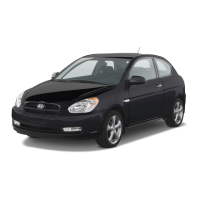



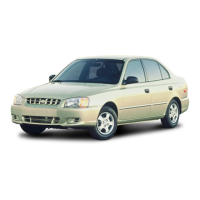
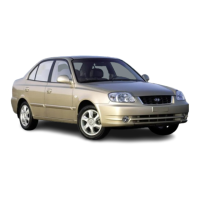
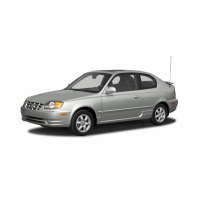
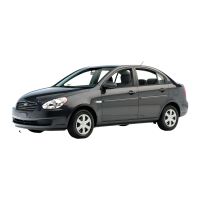
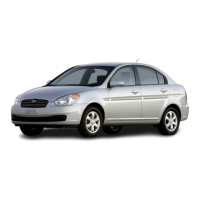
